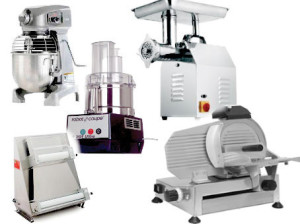Commercial food equipment is vital in making a restaurant business successful. Of course, staff, restaurant appliance and food menu are also vital. But the main thing that a restaurant need to reach success is to have access to high quality commercial food equipment all the time.
 Nowadays, customers follow and are driven to different trends when it comes to fashion, lifestyle and even foods. Customers will only patronize a restaurant if they feel that they will be served enough food that they have paid for and if the food they are paying for is worth their money. Of course, no one will patronize something that they don’t enjoy eating and if that happens, they will not come back in your restaurant anymore. This is why you must have commercial food equipment.
Nowadays, customers follow and are driven to different trends when it comes to fashion, lifestyle and even foods. Customers will only patronize a restaurant if they feel that they will be served enough food that they have paid for and if the food they are paying for is worth their money. Of course, no one will patronize something that they don’t enjoy eating and if that happens, they will not come back in your restaurant anymore. This is why you must have commercial food equipment.
Size Matters in Commercial Food Equipment
Nowadays, people love to eat foods that are served in small plates but comes in numerous little plates. This is called the “Macro Trend”. This is because kitchens of restaurants are getting tinier and they have to dedicate their space to their customers.
Solution: “Equipment [will continue] to get smaller and more complex as operators need to optimise their footprint,” says Dean Landeche, senior VP of marketing for Manitowoc Foodservice.
Don’t waste your energy
Macro-Trend: The costs of energy continue to get expensive, with back-of-house energy consumption making more than half of the expenditures. According to the National Restaurant Association’s ConSERVE website, the typical restaurant spends 35 percent of its energy dollar on cooking, 28 percent on cost of heating and cooling, 18 percent for dishwashing, 13 percent on the cost of lighting and 6 percent on the cost of refrigeration.
Solution: Reducing usage of energy has become top priority for owners, spurred on partly by efforts to meet EPA Energy Star standards.
“Energy Star has raised the bar by setting new standards that are higher than before,” according to Landeche.
“That is creating an unparalleled number of energy-saving pieces of equipment.” Currently, there are eight categories of equipment, ranging from dishwashers to ovens, that qualify for the Energy Star rating.
MicroTrends in Commercial Food Equipment
These are the smaller forces that are starting to impact the development of new commercial food equipment:
Increased menu diversity in a single restaurant (think Pan-Asian concepts) drives redesigned equipment that makes smaller-batch food prep and holding easier (think quarter sheet pans instead
of full sheet pans).
As more of today’s culinary students are trained in sous vide cooking, expect to see a wider range of sous vide units at more attractive price points.
Look for more smart phones and iPad applications to control the cooking food equipment remotely.
Space-saving equipment designed specifically for food trucks is on the rise.
As the display cooking increases popularity, people also expect to see more varieties in terms of the colors, shapes and designs for front-of-house cooking and merchandising units.
Induction cooking of food moves beyond just cooking into holding and merchandising units.
More equipment goes vent-less to comply with increasing local regulations on vent hoods.
New materials that have replaced the traditional stainless steel in cooking for cooking equipment but with
the same durability and ease of cleaning the commercial food equipment.
More sophisticated holding cabinets and systems increase the amount of pre-preparation that can be done, while lessening the chance of product shrinkage.
If you have any further questions about Commercial Food Equipment don’t hesitate to give us a call on 07 3868 4964. Or You Can Shop here.

